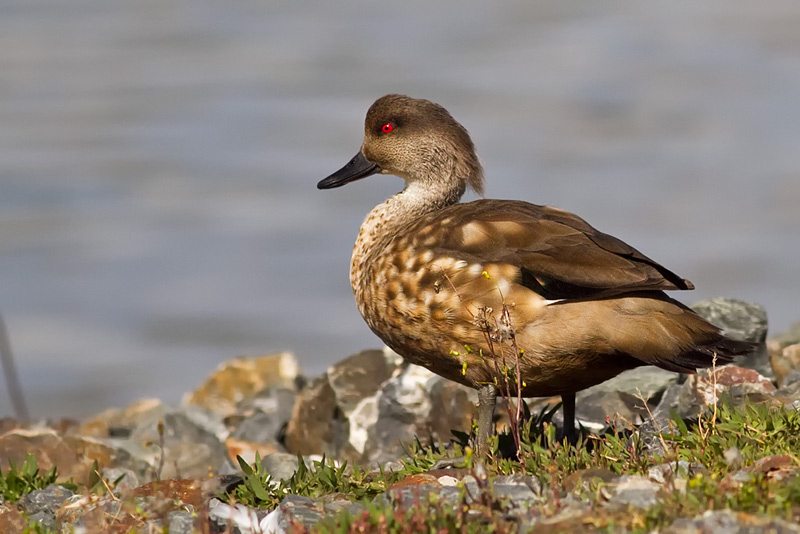
Crested duck(Lophonetta specularioides)
Phylum —chordata
Class — aves
Order — anseriformes
Family — anatidae
Genus –lophonetta
Appearance
The crested duck is a medium-sized waterfowl species, with adult males reaching up to just over a kilogram. Males and females look similar, with males having a slightly more prominent crest than females. The feathers of the mantle, back and scapulars are dark brown with pale centers, giving a mottled appearance. The abdomen, flanks and tail coverts are light gray, with the tail itself being distinctly elongated and black. The upperwing is gray brown to light brown, with the secondaries having an iridescent coppery to greenish sheen, with a broad back band behind, narrowly edged with white. Juveniles are similar but lack crests, have light brown faces, and paler abdomens than adults.
Length – 50-60 cm, weight – 1 kg.
Habitat
Crested ducks are endemic to South America.
Behavior
Crested ducks are non-gregarious, flocking only in areas of unusually high food supplies. Generally, pairs will expel others of their own species as well as alien species from their foraging areas. For these reasons they are considered highly territorial.
Diet
Crested ducks are dabbling ducks, which means they sieve through mud, silt, or gravel to find macroinvertebrates. Their diet, which is highly dependent on habitat, ranges from zooplankton, clams, kelp, and other macroinvertebrates.
Reproduction
Nesting birds are found almost throughout the year, depending on location within the range of crested duck. Two broods per year are common, but three may occur as well.
Nests are on the ground, close to water and usually built among grass or ferns for reduced visibility. Eggs are cream colored, and a clutch may have from five to eight eggs. The incubation period lasts about 30 days. Only the female incubates the eggs, but males play an important role in the ducklings early development. Crested ducks are monogamous and mating pairs exhibit high levels of cooperation which allow the species to live in proximity to other species such as gulls and skuas.
In captivity
Lifespan can reach 20 years.
Ducks feel great on the territory where there are tall grasses, shrubs and trees and a reservoir at least 1 m deep, the size of which allows them to swim. The area of the fenced yard should correspond to the number of birds contained, providing it with the opportunity to retire and hide. Small shelters on the top of the open area in the form of sheds, huts and booths are necessary as shelters from birds of prey, bad weather, as well as for overnight stays. Building aviaries, you should take into account the desire of the bird to fly. Owners usually cover them from above or make regular trimming of the wings.
It is important to provide pairs of ducks with a brood with the opportunity to graze on fresh grass or give access to shallow reservoirs overgrown with aquatic vegetation (duckweed, reeds, etc.). Such conditions of keeping contribute to better preservation and growth of young birds. Daily bathing under the control of adult birds is safe.Keepers of these birds should knowthat during breeding, these ducks are supposed to take care of their territory and behave quite aggressively.
 Russian
Russian
 English
English
























